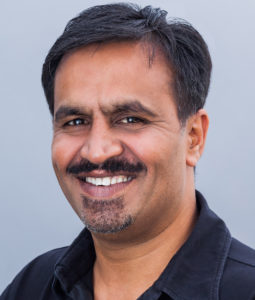Data to Take APAC Centrestage in 2018


From security, to compliance, to intelligence, data appears to be the main focus for Asia's ad tech community in the new year, with market players also urging for more education.
The need for marketers in this region to arm themselves with knowledge of key issues, such as programmatic and ad fraud, remained a common theme this year amongst ad tech vendors that ExchangeWire spoke with.
Much of the discussion, though, centred around various aspects of data, including the need for higher data security, especially after several high-profile breaches last year, as well as the need to better tap data to improve attribution.
The spokespersons are: Rohit Dadwal, Mobile Marketing Association's (MMA) Asia-Pacific managing director; Zachary King, MediaMath's Asia vice president of commercial; and Kosuke Sogo, AdAsia Holdings' CEO and co-founder.
ExchangeWire: Highlight key areas the ad tech industry needs to focus on in 2018 to better support Asia-Pacific brands as well as agencies.
Rohit Dadwal: As it stands, programmatic has primarily been used by larger agencies and brands, albeit in silos due to a lack of knowledge of programmatic and its competencies. Therefore, more transparency and education around programmatic is needed to equip brands and agencies with the necessary skills to implement programmatic campaigns, from native ads to programmatic video.

Rohit Dadwal, APAC MD, MMA
The ad tech industry also urgently needs to address data safety, especially as news about data breaches continue to hit the headlines, including Uber's global security breach, which affected 380,000 Singapore users. This becomes more pressing as app usage grows and we upload more of our personal data online. Apple also plans to combine iPhone, iPad, and iOS apps to create one user experience, WeChat is poised to become China's official electronic ID system, and mobile payments made by credit card users in Singapore continue to climb.
Only by boosting user confidence, and assuring consumers their data is safe, will the ad tech industry be able to better support Asia-Pacific brands and agencies.
Zachary King: There are three key areas to improve. First, I think we will start to see brands moving to a more defined take on attribution. Everyone knows that last-touch attribution is flawed; so 2018 is when we will start to see some actual action on this as multi-touch attribution measurement becomes possible. This will result in a more accurate understanding of the channels that are actually performing and, soon, budgets will follow accordingly.
Second, with ad fraud remaining an issue, more education is needed to help the ecosystem understand and tackle this challenge. The fight against ad fraud will warrant more knowledge sharing and partnerships amongst all stakeholders, including advertisers, agencies, and brands. Once advertisers take the time to truly understand the issue, this will lead to the appropriate actions to manage it. Independent third-party verification partners and industry initiatives, such as ads.txt, also will become part of the best-practice toolkit and ensure fraud is less of an issue in this space.
Also, the scrutiny of walled garden environments with regards to brand safety, accuracy, and performance will continue, with the acceptance of these players being able to 'grade their own work' evaporating. This will open opportunities for third-party verification and make inventory open through other platforms.
Kosuke Sogo: I'll address the white elephant first: data sources and the handling of data. GDPR (General Data Protection Regulation) brought to the fore awareness and a sense of urgency for Asia-Pacific businesses to look at how they are collecting, managing, and storing data. The entire advertising ecosystem will need to take a good look at this, from brands, to agencies, to tech vendors, to publishers. Everyone needs to ensure local and regional data laws and regulations are complied with.
For tech vendors, this means ensuring second- and third-party data sources are in compliant with GDPR, so brands and agencies are operating within a safe environment.
Education also continues to be a key need in this region, with each market showing different levels of maturity. Courses often tend to be vendor-centric, but marketers need to understand the full range of offerings available to them, even if the planning and execution is done by an agency. Marketers then can make more informed decisions to drive their brand's advertising.
Another key area is the availability of more digestible ad formats. We believe ads should be engaging without disrupting a user's experience; and this is becoming a bigger requirement, as browsers move to 'self-regulate' advertising. This should be driven by both demand- and sell-side players to ensure there is enough supply to meet the impending shift.
What are your top priorities for 2018?
Dadwal: Measurement and attribution on mobile devices will be a key focus for 2018; and we're advocating greater adoption of multi-touch attribution (MTA). Our survey revealed that 60% of marketers identified MTA as a top need and we expect this figure to rise next year as more marketers move from traditional marketing mixed modelling to MTA. Drawing on user-level data analytics, MTA allocates proportional credit to specific touchpoints and allows marketers to evaluate across all channels through a unified user ID. Therefore, it enables advertisers to accurately track their ROI on any device, and tweak and improve campaigns in real time.

Kosuke Sogo, CEO & Co-Founder, AdAsia Holdings
Another key priority is improving mobile creative. With mobile advertising now a table stake, brands need to do more to stand out. Besides having a dedicated mobile strategy, we also need to constantly push the envelope to find more innovative ways of marketing on mobile.
Sogo: In 2018, we will be looking to drive the artificial intelligence (AI) conversation for AdAsia Digital Platform for Advertisers. Machine learning is already being used to match advertiser demand to inventory supply, but we are taking a step back and using AI to drive cognitive platforms and provide marketers recommendations on courses of action. Right now, there is human analysis of campaign results to direct marketing spend and strategy, but this often can be tainted by emotional bias or lapses of judgement. AI will play a big part in taking that decision-making process a step further and point marketers in the right direction.
Another priority for us this year is to offer less disruptive user experiences. Video advertising is one of our highest growth areas across Asia, and we're looking to bring more innovative video formats for both desktop and mobile, which fit within a user's behaviour flow.
With ad fraud still a big focus, how should Asia-Pacific marketers, as well as the wider ad tech community, look to better resolve this in the new year?
Dadwal: With mobile ad spend increasing and projected to account for 69% of total ad spend by 2021, another top priority for the industry should be tackling mobile ad fraud through collaboration, especially given the high rates of smartphone penetration in this region. Ad fraud plagues all players across the ecosystem – not just advertisers – so there is an opportunity for all parties to collaborate and approach ad fraud more cohesively.
Rather than play the blame game, everyone should instead work together towards a solution, and kickstart conversations on how to tackle specific forms of mobile fraud, such as in-app ad fraud. This has to be done in a way that is inclusive and fair to all parties, from setting benchmarks to harnessing technology, to detect fraud.
King: Education on what ad fraud exactly is, what is causing it, and the developments around this will help stakeholders better resolve the issue. While major brands have taken big steps away from advertising on YouTube due to their zero-risk approach, marketers should be arming themselves with knowledge on how to effectively counter fraud.
This will require a multi-faceted approach that deploys supply strategies and uses industry tools like ads.txt, third-party independent verification partners, and proprietary fraud detection tools. This is something the industry is making progress on and we will see more of in 2018.
Sogo: In 2018, we expect industry players to be fully on board with IAB's ads.txt initiative. At the same time, it is important for marketers to set some budget aside for third-party verification.
What buzzwords would you like to see gone in 2018, as well as those you would like to see actually applied amongst Asia-Pacific brands?
Dadwal: 'Data-driven' has become trite from overuse. After all, almost all marketing now involves data in some form. The difference arises when brands actually know how to activate this data and truly leverage it to unlock opportunities that help them achieve business goals.
'Transparency' is another buzzword in urgent need of redefinition. Hopefully, 2018 will see us moving away from transparency as a muddy, vague concept, to a clear industry-wide approach where all stakeholders play an active role in cleaning up the ecosystem.
King: One buzzword the industry needs to break down further is 'viewability'. It is a concept far more complex than it appears to be and one challenge is that there is no consistent definition to what it means. While IAB has taken some good steps towards defining a standard, we still need to work together towards building better industry standards.
A buzzword I would like to see with greater application is 'omnichannel'. More and more advertisers are adopting the omnichannel approach, as it reaps greater rewards than silo-ed activities. In more advanced markets, marketers already have been embracing this approach.
In this aspect, looking towards 2018, MediaMath will be adding more supply channels to make it easier to run all digital activities through a single platform. A Forrester study showed that an omnichannel approach would lead to improved campaign performance and operational efficiency.
Education is another initiative that we need to speak more about and this should extend to every stakeholder in the ecosystem. This includes ad tech players, agencies, and especially brands themselves. There is a need to go beyond and gain a deeper understanding of programmatic concepts and issues in the Asia-Pacific ad tech scene. Advertisers should be asking their agencies and partners the hard questions and arming themselves with the knowledge to do so.
Sogo: We're just months away now from the onset of GDPR and it should no longer be just an overlooked buzzword. It is important for marketers in Asia-Pacific to understand the reach and severity, and take steps to ensure compliance.

Zachary King, APAC VP of Commercial, MediaMath
Another buzzword, 'blockchain', may be part of the answer to GDPR compliance, but we will not see widespread adoption within this region in the year ahead. This means marketers in Asia-Pacific need to regularly clean and audit their first-party user data, even if they have no operations in EU.
We're also seeing an increase in demand for PMP deals as marketers in Asia-Pacific look for higher quality inventory and a transparent, more fraud-free environment. This demand will continue to increase into the new year and publishers also will enjoy the benefits of increasing PMP deals after running with them for some time.
I believe AI also will become less of a buzzword this year as the industry provides more knowledge and managed expectations around the concept. We will begin to see more use cases of AI being tested and succeeding, and how it can play a part in a marketer's arsenal. To that end, the future marketer should be comfortable with handling datasets and have the confidence to run AI applications.
Where do you hope to see AI and machine learning being further applied next year?
Dadwal: We hope it will move beyond powering campaign performance and drive more creative optimisation through dynamic content creation. This would help brands better target consumers by delivering relevant, personalised messaging across a user's entire online journey and across all channels. We hope more marketers will collect and channel user data into AI and machine learning programmes to optimise their communications with consumers and drive business impact.
These tools also will come into play to combat ad fraud, as we expect more marketers will turn to AI and machine learning to detect fraudulent activities through analysis of traffic and conversion rates, as well as self-learning ability. By identifying nonhuman behaviour in real time, brands can intercept fraudulent activities and minimise losses.
King: Both are fundamental to programmatic and have been central to MediaMath's own offerings since inception. I think AI also will start to be applied in areas like natural language processing; and this will start to be incorporated into the current raft of offerings, further expanding the options for marketers.
Sogo: As the conversation around AI evolves from hype to reality, marketers should begin to properly understand the benefits that AI can bring to the table. The industry should be moving away from seeing AI as an all-encompassing magic solution, and we should see more use-case-level breakthroughs and applications of AI and machine learning.
This includes identifying data between disparate business applications to build a clearer picture of a customer. At the same time, people-based graphs, online-to-offline, along with AI at the CRM level, are some other interesting areas that should be explored, particularly in terms of infrastructure and setup. Another area where AI can lead the charge is in connecting – and attributing – various marketing and advertising activities, and allowing for marketers to build better brand storylines.
Ad FraudAd TechAdvertiserAnalyticsAPACArtificial IntelligenceattributionCross-DeviceDataMeasurementMobileProgrammaticPublisherTransparency








Follow ExchangeWire